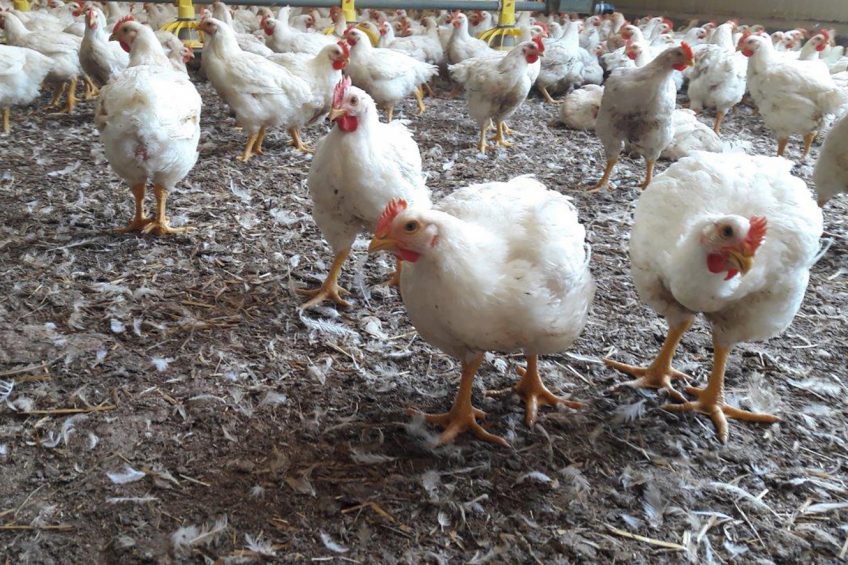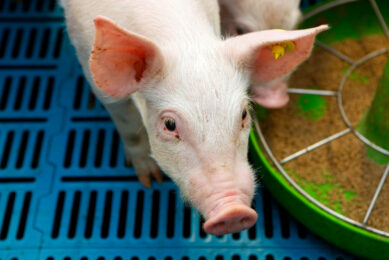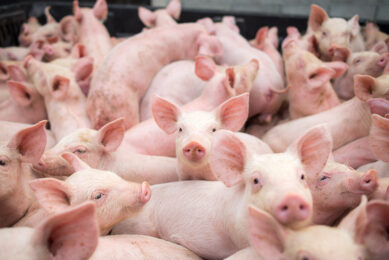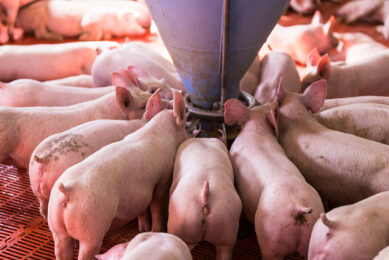Finding the most effective alternative

Some antibiotic alternatives, like organic acids, are well established in animal nutrition, others like phytogenics, have been applied more recently. In any case, the physicochemical and antimicrobial properties of these alternatives, and the place of delivery in the gastrointestinal tract are of great importance.
Any pressure or shifts in the composition of the chicken microbiota can be of big concern for global performance as well as for welfare or disease. Overall a healthy digestive tract means keeping in balance the microbial status of the tract. This has been the role of antibiotic growth promoters (AGPs), and some anticoccidials, for more than 50 years. AGPs are fed continuously at low (subtherapeutic) levels to improve performance, flock health and uniformity, keep an intestinal microbiota balance controlling digestive infections or subclinical challenges, and finally improve economical results for poultry producers. Since restricting, or in some casses banning, the use of antibiotics as feed additives, nutritionists and feed additive producers have looked increasingly towards developing alternatives with similar effects.
Due to their antimicrobial properties, organic acids have been used for a long time as an effective means of reducing or controlling microbial (bacteria, moulds, yeasts) contamination of raw materials, feeds and foods. Organic acids are composed of a carbon chain negatively charged (anion), and of a hydrogen ion (H+). When both are associated the acid is uncharged and is able to diffuse freely across the microbial cell membrane. The pKa value is the environmental pH where half of the organic acid content is dissociated and half stays undissociated. As pKa values of organic acids are generally lower than 5, when the undissociated form has entered a bacteria cell, pH of the cell cytoplasm being near 7, the acid dissociates and the resulting H+ ions acidify the cytoplasm, stressing the pH regulatory mechanisms of the cell. Then, bacteria growth is inhibited and cell death can occur. Unlike mineral acids such as hydrochloric acid which is naturally secreted in the stomach, the anion portion of the organic acid accumulates in the cell causing other deep damages.
Achieving the best antimicrobial effect
As a consequence of the pKa, the pH of the medium is higher so more of the acid is dissociated and less able to penetrate the microbial cell membrane. Thus, within the gastrointestinal tract, a given concentration of an organic acid is likely to have a greater antimicrobial effect in the lower pH regions than in the higher pH ones, and this is an important consideration for organic acid application and product development.
The nature of the anions and the pKa values are the 2 main characteristics leading to the choice of the organic acids. Benzoic acid is a noteworthy candidate as its pKa value is 4.2, higher than the pKa of formic acid for instance, and the phenolic part is an efficient damaging agent for the bacteria cell. As in the general case for organic acids, gram-negative (i.e. E. coli, Salmonella) are much more inhibited than gram-positive bacteria by benzoic acid, even if it is more effective on clostridia than formic acid. Finally, experimental studies have confirmed that several hundred grams of benzoic acid per metric tonne of feed, improve broiler and turkey performances.
Beneficial properties of phytogenics
Plant-derived substances or phytogenics have been used for centuries for the purpose of flavouring as well as for their beneficial effects on feed intake stimulation (appetising effect), digestion through digestive secretions stimulation and gut protection through antioxidant, anti-inflammatory, antimicrobial, anthelmintic and antiviral effects.
Essential oils are one of the most popular classes of phytogenics; they are complex mixtures of various volatile, aromatic molecules, only some of them having antimicrobial properties. The complexity and variability of the naturally extracted products complicate the assessment and application of essential oils. For these reasons, it is usual to supplement poultry feeds with purified or synthetic phytogenics also called nature-identical. Generally, high antimicrobial activities are obtained from phenolic compounds like carvacrol and thymol (2 molecules found in oregano and thyme), and cinnamaldehyde (from cinnamon).
Zeng and others (2015) reviewed many experimental studies done with various essential oils added to poultry feeds. They reported that the improvement in performance (independent of the origin of the essential oils, the quantity added to the feed and the environment conditions used in the trial) was 3% and 3% for weight gain and feed conversion respectively. With similar conclusions, Hashemipour et al (2013) reported that combinations of thymol and carvacrol given to broilers in their feed, decreased feed intake, increased weight gain (+2.9 to +4.0%) and improved feed efficiency (+3.9 to +6.4%). These results are quite close to those obtained with AGPs and probably involved the antimicrobial properties of essential oils. Gram-positive bacteria appear to be more susceptible to essential oils than gram-negative bacteria but many studies have shown the antimicrobial activity of selected compounds, like carvacrol, towards different strains and serotypes of Salmonella or E. coli (Table 1).
Positive effects of vectorisation technology
Although mechanisms of action are not completely described, it is thought that some components of essential oils can impair the micro-organism cell membrane permeability and also cause oxidative stress, quite similar mechanisms to those proposed for bactericidal antibiotics. A combination of organic acids, like benzoic acid, and phytogenics is of interest because, as organic acids have a higher antimicrobial activity on gram-negative bacteria while phytogenics are well active on gram-positive bacteria, the result is a wider spectrum of antimicrobial activity.
One main problem is that both organic acids and phytogenic compounds are quickly dissociated, absorbed and metabolised after entering the gut. Consequently, to reach antimicrobial concentrations in the distal intestine, it would be necessary to increase dramatically the concentration in the feed, causing decreased feed intake. Vectorisation using the micro-encapsulation of active ingredients in a fatty matrix and a progressive release all along the intestine, appears as the most effective solution. For this purpose, Mixscience has developed Lumigard products for poultry. Positive effects on poultry performance have been clearly demonstrated and it is expected that future vectorisation technology could contribute to improving performances even more.






